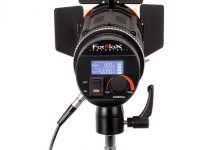It’s quite impressive how much the technology has grown as of right now, and it has no signs of slowing down anytime soon. Talking about the NLEs in particular, we can’t miss the fact that some complex and labor-intensive operations such as mask tracking and rotoscoping, that used to take so much time and efforts in the past, now can be accomplished in a matter of seconds with just a couple of clicks. The super-efficient and powerful tools that current NLEs provide are just astounding.
In the following episode of the Adobe Creative Cloud TV, Terry White demonstrates how to mask a moving object easily in a video using Premiere Pro CC.
It’s no big surprise that with the release of the latest Creative Cloud suite and the significant updates the platform has received thus far; Premiere Pro became even more popular and a preferred go-to solution for many professional editors and video enthusiasts around the world.
Overall, the blurring process can be challenging in a video, however, as we’ve already seen in the above tutorial, Premiere Pro CC’s new Masking and Tracking features make the process a lot easier and straightforward.
As Terry White suggests, just select a clip in the timeline and add a Fast Blur to it. Then, in the Effects Controls panel choose the form of the mask and click a button to create a mask, resize and position it over the portion of the video that you want to be blurred. After pressing the Play button in the Mask Path Tab, the software will immediately start to analyse your video, frame by frame, making sure that the mask stays on the moving subject from beginning to the end of the clip.
You can change the settings of the applied effect any time without a need for analysing the clip twice. However, there might be some situations when the subject does go behind an object or some fast pans or zoom ins or outs occur in the frame. In this type of occasions, you should stop the tracking operation, move the play head to a point where the subject is visible, and hit the tracking button once again.
If you want to obscure multiple items or portions of the frame, then you must create multiple masks, and perform the tracking operation multiple times. The tracker works great mainly when the mask is positioned over relatively constant portions of the frame, inside the borders of a face as an example in the above video, or another part of a solid outline.
Let’s be honest, we all love simple techniques and efficient workflows. They save us a lot of time and efforts, and could be crucial, especially for guys working in the broadcast industry and news editorial departments where time is the most precious asset, where you simply need to move as quickly as possible and where each second counts. This is where this type of simple tips and tricks are making the real difference and should be an integral part of any professional editor’s skill set.
[via Adobe Creative Cloud TV]
Disclaimer: As an Amazon Associate partner and participant in B&H and Adorama Affiliate programmes, we earn a small comission from each purchase made through the affiliate links listed above at no additional cost to you.





How can you add a color to the mask instead of a blur?
Good question…
I found a way…Put a ‘color matte’ on a separate video track and pick the color you want from the pop up window. You can set the matter for however long the mask will be up. Works great!
I had a hard time posting this on the site…